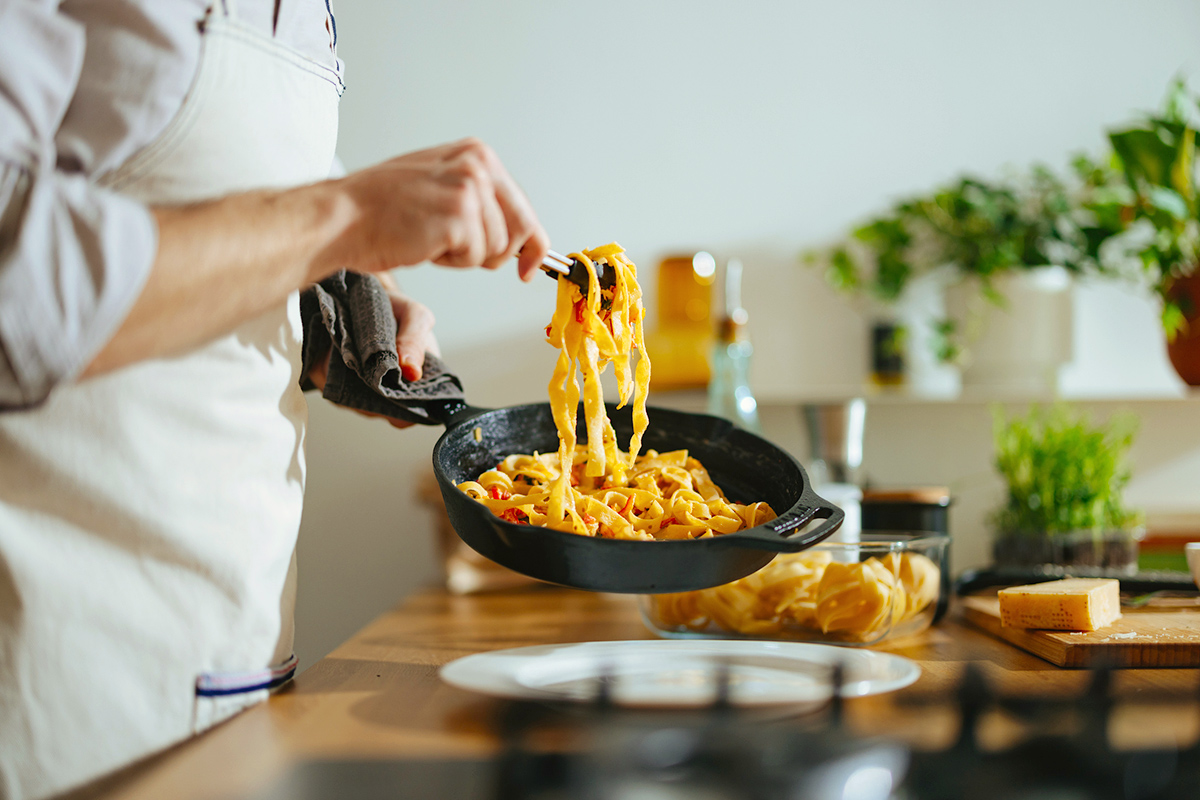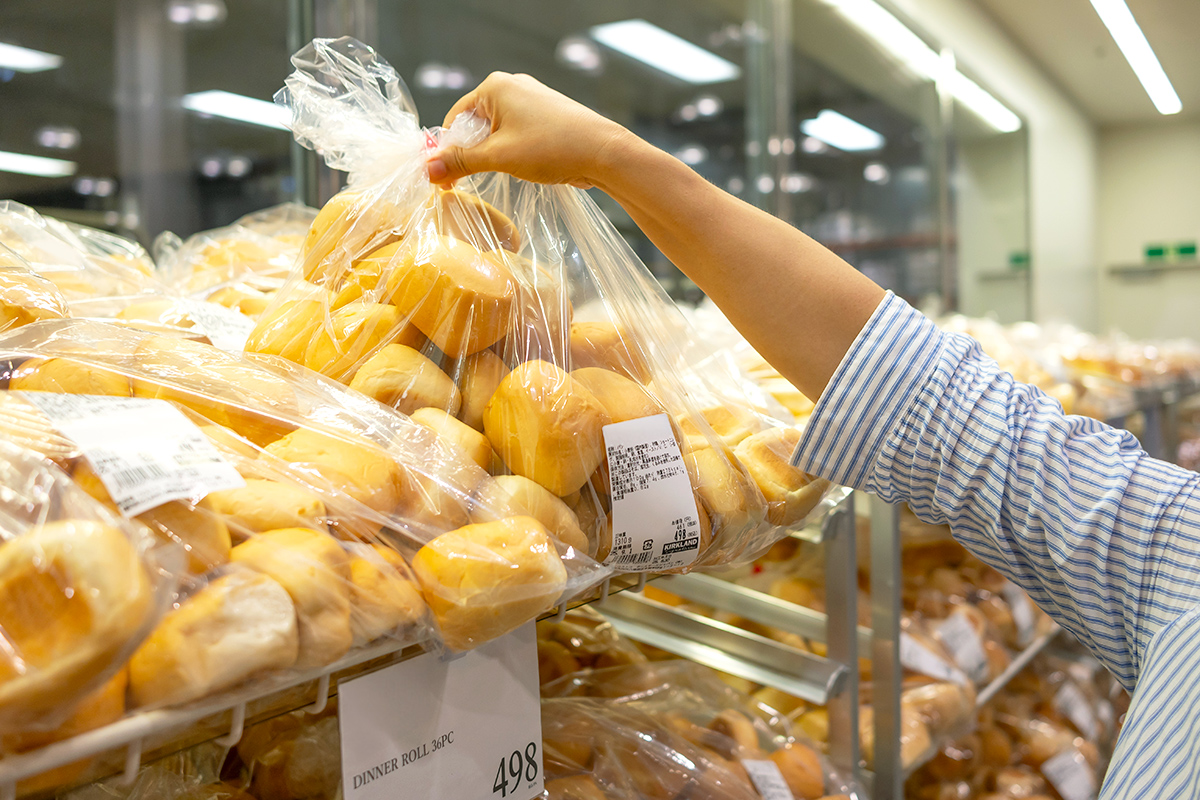Frozen food was one of the 20th century’s greatest inventions. Suddenly, people in the Midwest could enjoy top-quality seafood, and peak-season produce could be preserved in almost perfect condition for enjoyment year-round.
The thing is, some foods are better suited for freezing than others. That’s not a big deal for commercial operations, which benefit from decades of experience and have industrial equipment at their disposal, but it presents more of a challenge for home-frozen foods. Our home freezers simply can’t capture freshness the way large blast freezers can. With these limitations in mind, here are 14 foods you should never freeze at home — unless you’re prepared to adjust your expectations or techniques accordingly.
1. Store-Bought Seafood
Though it would be nice to think otherwise, the reality is that unless you live in a major fishing port, shrimp, lobster tails, and most other seafood at the store have almost always been previously frozen — they’re not “fresh from the boat” (or aquaculture complex).
Unless you know for certain that your store-bought fish or shrimp are freshly caught or properly thawed, don’t plan on refreezing them. Seafood, especially shellfish, is highly perishable. Any bacteria that get a toehold will survive the freezing process and come roaring back to life once thawed. As a former certified food safety trainer and chef, I make no exceptions to this rule.

2. Potatoes, Raw or Cooked (in Most Ways)
I know, I know — supermarkets have freezer cases stuffed with nothing but frozen potato products. But as I mentioned above, industrial food preparation is fundamentally different.
Raw potatoes freeze very poorly; they shed a lot of moisture and develop an unpleasant texture. Baked, boiled, or mashed potatoes aren’t much better, often turning soggy when thawed. Fried or roasted potatoes are just a small step up. If you make twice-cooked fries at home, freezing them after the initial blanching stage works great. For other uses, your best bet is to choose a “waxy” potato (such as a red variety) over a “starchy” potato (e.g., a russet), parcook it by steaming or boiling, then cut or shred it before freezing.
More from our network
House Outlook is part of Inbox Studio, which publishes content that uplifts, informs, and inspires.
3. Raw Tomatoes
If you’re a tomato lover, mid-to-late summer is the best time of the year. Whether you grow your own or buy them at the farmers market, there’s nothing like a fresh, vine-ripened tomato. The problem, especially if you grow your own, is often having more than you can conveniently use at once.
Tomatoes are mostly water, and freezing them breaks down their structure. (So, forget about using them in salads or sandwiches.) The upside is that if you are absolutely swamped and can’t keep up with sauce-making, you can freeze the tomatoes whole for later use in sauces, soups, chili, curries, and rice dishes. Once they’re thawed, the peels will slip off easily, and a lot of their excess water will drip away, allowing them to cook down more quickly.

4. Cream Cheese
If you enjoy a bagel with cream cheese every morning, it’s tempting to stock up when the latter is on sale to stretch your budget. Unopened cream cheese keeps pretty well, usually three to four weeks past the freshness date on the packaging (it’s not an expiration date). But if you took full advantage of that sale, you might be tempted to freeze the cream cheese instead.
Don’t do it.
Sadly, despite all the stabilizers cream cheese contains, it loses moisture and develops a weird, grainy texture when frozen and thawed. I’ve tried this myself, in the interest of frugality, and it’s a definite no-go.


5. Egg-Based Custards and Meringues
You’ll occasionally see meringue-topped desserts in your supermarket’s freezer section, but this involves a whole lot of food-manufacturing magic to work properly. At home, any frozen or thawed meringue will “weep” moisture and develop a gummy, rubbery texture.
Similarly, custard-style sauces and fillings thickened with eggs don’t freeze and thaw well. Freezing causes them to “curdle,” meaning the egg proteins binding the milk and cream together will contract and toughen. The result is a loss of moisture and unpleasant grainy lumps. The exception is ice cream, where churning and fast freezing keep ice crystals small and manageable, preventing curdling.

6. Cucumbers
It’s generally best to avoid freezing produce with high water content, and cucumbers are a classic example. The whole point of cucumbers, from a culinary perspective, is that crisp, juicy, refreshing crunch. Freezing them, unfortunately, causes the water inside the cucumbers’ cell walls to expand, rupturing those delicate structures. When you thaw them, all you’ll have left is a soggy, spongy mess. Pickling is a far better way to preserve them.
7. Whole, In-Shell Eggs
Given how much egg prices have fluctuated over the past few years, you might think seriously about stocking up when they’re on sale. You might even consider partaking in that whole “backyard chickens” thing. Either way, it’s easy to overdo it and find yourself with more eggs than you can realistically use.
Freezing eggs whole in the shell, however, isn’t a good solution. The eggs will crack when they freeze, and the yolk gets quite gummy. Your best bet is to crack and beat the eggs, then measure them into recipe-sized portions. A large egg is roughly 3 tablespoons (one for the yolk, two for the white), which is a good rule of thumb. You can also separate the eggs and freeze beaten yolks and whites individually.

8. Milk, Cream, and Dairy-Based Sauces
Stocking up on milk or cream during a sale is also problematic if you plan to freeze the extras. Thawed milk comes out a bit separated and needs to be shaken before it can be drunk. Cream tends to get grainy with lumps of milk fat. Dairy-based sauces are tricky as well, because they’ll usually “break” or curdle once thawed, leaving behind watery liquid and ropy webs of milk protein.
9. Lettuce (and Other Raw Greens)
Most vegetables can be frozen if prepped correctly. However, there are a few exceptions, with lettuce — and other raw, leafy greens — ranking high on that list. If you attempt to freeze them, you’ll find yourself the proud owner of several freezer bags full of green, slimy compost. That said, you can treat romaine and other sturdy lettuces much like spinach: Steam or lightly sauté them, then freeze once cooled. You won’t want to make salads out of them at that point, but you can use them as a side dish, like any other cooked greens.

10. Leafy Herbs
After what I’ve just said about leafy greens, you won’t be surprised that tender, leafy herbs don’t freeze well either. Sticking those leftover sprigs in the freezer may make you feel frugal today, but you’ll change your mind when you try to use them.
I like to puree my herbs in a bit of oil, which helps protect them from the freezer and preserve their flavors. While portioning pureed herbs into ice cube trays is a common tip, I prefer to pack mine flat in zipper-seal freezer bags. This way, I can easily break off any size portion I need, then reseal the rest and return it to the freezer.
11. Cashew-Based Sauces and Soups
For vegans or those who are lactose-intolerant, cashews are a popular milk alternative for cooking and baking. They do a great job of replicating cream’s richness and texture. Unfortunately, just like milk and cream, cashew-based sauces and soups don’t hold up in the freezer. Once thawed, that smooth, creamy consistency becomes grainy and disappointing.

12. Zucchini and Summer Squash
Zucchini is a famously productive plant, so gardeners often end up with more than they can use. Unfortunately, it’s also a very watery vegetable that freezes poorly, becoming a sodden mess when thawed.
I’ve tried a few ways of freezing zucchini, and the only one I’m comfortable recommending is to shred it, salt it lightly, let it sit for an hour or two, then place it in a cotton kitchen towel or cheesecloth and squeeze out as much moisture as possible. The drained shreds are excellent for baking, or for making zucchini fritters or pancakes.
13. Cooked Rice or Pasta
Any time you’re making a batch of rice or pasta, it’s always a good idea to cook extra. Both are versatile leftovers that you can use to make up several new meals. Unfortunately, neither freezes well; you can do it, but their texture will be disappointing. Additionally, if your rice or pasta sat at room temperature for a couple of hours before freezing, it might have been contaminated with a nasty bug called Bacillus cereus. Believe me, you want no part of that.
The good news? They’re both inexpensive pantry staples. Discarding any leftovers you can’t eat won’t dent your budget too badly.

14. Questionable Leftovers and Markdowns
Until now, I’ve discussed specific foods, but this last category is a bit of a catchall. While I’m all for frugality and against food waste — it’s very much how I was raised and how chefs eke out a profit — there’s a limit. Freezing food is a good way to prevent spoilage, but freezing food that’s already spoiled or on the brink is a waste of your time.
If you want to freeze leftovers, do so as soon as they’re cool — not after they’ve sat out all afternoon or spent five days in your fridge. The same goes for any perishables you’ve bought on markdown at the supermarket: Freeze or use them on the same day, before they have a chance to sprout nasty bacteria. Otherwise, when you thaw and reheat the leftovers, you create an opportunity for those bacteria to reproduce rapidly (and some common bacteria produce heat-stable toxins that cooking won’t affect).

















